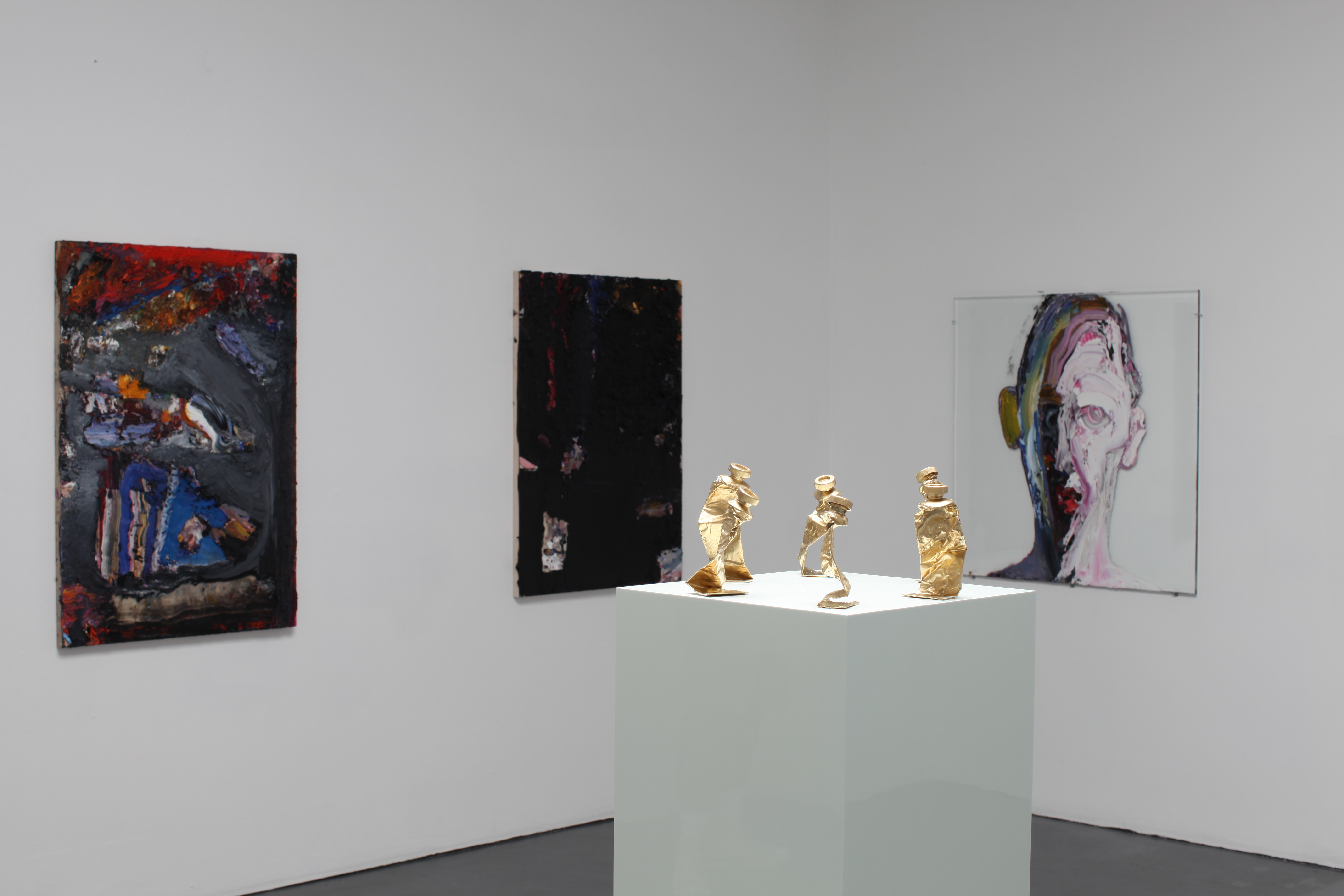
Ray Turner / Compendium 2 Paint
September 06 - October 25 2014Peter Mendenhall Gallery
Ray Turner’s PSI: Paint Scene Investigation
Ray Turner’s startling new work expands upon the portraits on glass that he is known for, presenting the conceptual ramifications of paint itself as subject matter. By titling this ambitious exhibition, Compendium 2, Turner displays nothing less than a visual treatise on paint, exploring its essence as a vehicle for expression and illusion, using both color and absence of color. The show’s title takes its cue from the sculpture Compendium (1991), a work made early in Turner’s career while still in the spell of classic minimalism and directly inspired by the painted reliefs of Lawrence Carroll. Like the work of that artist – and unlike the pure forms of Lewitt or McCracken – Turner’s wooden cube is a study in the vicissitudes of lived experience, painted with gnarly layers of white and black, distressed by gouges and imperfections.
The paintings on glass of the past two decades – a surface usually used to protect artworks – seem to have prompted the even more radical investigations of Compendium 2. Applied like slathered tattoos, Turner’s portraits reside on slick square skins that are transparent, with the fields behind the figures left empty of paint. The blank glass fields reveal various colored wall panels that set off the images and enhance their floating spectral presence. The transparent thickness of the glass causes the figures’ silhouettes to form thin shadows that seem to shimmer. The slight distance from the wall emphasizes the film of paint that embodies each human image. Close likeness of his subjects is for Turner, as he calls it, only a “byproduct”; indulging his own emotional response to a painting as he makes it, he explains that a kind of “capturing can’t not happen.” But always the independent life of the painting takes precedence over the capturing.
Placed at the entry of the exhibition, Self Portrait (2014) is a square sculptural relief painted in shiny lime green automotive lacquer whose reflective surface acts as a kind of mirror framing the viewer. We see our own image here against a colored background as if captured in one of Turner’s identically- sized portraits. Just across from this work, six Ray Turner paintings (2013-14) – executed with virtuosic brushwork – display what Turner calls “mugshots” of random individuals who happen to share his name. Based on photographs found on the internet, these are portraits not of individuals but of random alter egos who reflect back on the artist as an undefined and unknowable entity, a composite of personae based on happenstance. In the foot-square serial portraits, Turner celebrates paint’s ability not to define identity but to open a philosophical inquiry. His conceptual spin takes these works completely out of the realm of conventional portraiture. Similarly, with its smears of viscous pink and flesh-colored oils, Lucien Freud (2013) is less a tribute to the famous British figurative artist than an act of de-mythologizing, rendering him as a kind of dour zombie whose products live on after death. But at the same time, Turner holds on to a notion of painting as a redemptive act. Countering this work, Eve as a Young Woman (2013) appears as a pale beauty whose eyes show a sense of enduring purpose that transcends the primordial woman’s knowledge of the fall.
Two series of abstractions push and pull thick paint into stimulating energy fields. The off-white and pale blue abstractions are patch-work arrangements of textures and forms, revealing through subtle gradations the ability of paint to speak its own nuanced language. The works using color were made slowly over the past fifteen years using leftover paint scraped from Turner’s palette onto glass surfaces after studio sessions. Overturning the spontaneity of abstract expressionism, Turner creates slow boiled stews of troweled paint, bringing the aesthetic decision-making process to a crawl so that a composition gradually reveals itself. Like other practitioners of thickness such as Jess, Ronald Bladen, and Jay DeFeo, Turner uses globs of paint as assertions of the medium’s power and meaty appeal. Off-kilter shades of orange, vermilion, and lime ornament the works like scabrous brooches. Turner’s slo-mo method involves a re-purposing of paint and an abandonment of color choice. Excess paint finds a place for itself. Arranging these concatenations over time, Turner creates a kind of found Ab Ex, created in a sense by the feelings and desires of paint itself. Finally, in the sculpture, Asylum (2014), six empty paint tubes are arranged on end on top of a mint green pedestal. Like bronze figurines, Turner’s painted gold heroes perform a dance celebrating lives spent in the creation of art.
- Michael Duncan






